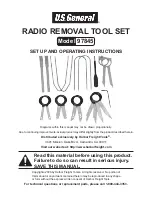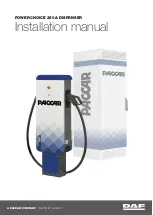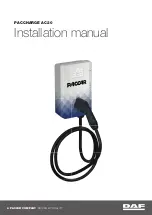
Cadillac XT6 Owner Manual (GMNA-Localizing-MidEast-14574703) - 2021 -
CRC - 7/15/20
DRIVING AND OPERATING
235
.
Move the thumbwheel down toward
SET
−
until the desired lower speed
is reached, then release it.
.
To decrease the vehicle speed in
small increments, briefly press SET
−
to the first detent. For each press,
the vehicle goes about 1 km/h
(1 mph) slower.
.
To decrease the vehicle speed in
larger increments, briefly press
SET
−
to the second detent. For each
press, the vehicle speed decreases to
the next 5 km/h (5 mph) mark on
the speedometer.
The cruise control system may
automatically brake to slow the
vehicle.
The speedometer reading can be
displayed in either English or metric
units. See
The increment value used depends on
the units displayed.
Passing Another Vehicle While
Using Cruise Control
Use the accelerator pedal to increase
the vehicle speed. When you take your
foot off the pedal, the vehicle will slow
down to the previous set cruise speed.
While pressing the accelerator pedal
or shortly following the release to
override cruise, briefly moving the
thumbwheel down toward SET
−
will
result in cruise set to the current
vehicle speed.
Using Cruise Control on Hills
How well cruise control will work on
hills depends upon the vehicle speed,
load, and the steepness of the hills.
When going up steep hills, you might
have to step on the accelerator pedal
to maintain speed. When going
downhill, the cruise control system
may automatically brake to slow the
vehicle. Also, you may have to brake
or shift to a lower gear to keep your
speed down. If the brake pedal is
applied, cruise control disengages.
Ending Cruise Control
There are four ways to end cruise
control:
.
Step lightly on the brake pedal.
.
Press
*
.
.
Shift the transmission to
N (Neutral).
.
Press
J
.
Erasing Speed Memory
The cruise control set speed is erased
from memory if
J
is pressed or if the
ignition is turned off.
Adaptive Cruise Control
(Advanced)
If equipped, Adaptive Cruise Control
(ACC) allows the cruise control set
speed and following gap to be
selected. Read this entire section
before using this system. The
following gap is the following time
between your vehicle and a vehicle
detected directly ahead in your path,
moving in the same direction. If no
vehicle is detected in your path, ACC
works like regular cruise control. ACC
uses camera and radar sensors.
If a vehicle is detected in your path,
ACC can speed up the vehicle or apply
limited, moderate braking to maintain
the selected following gap. To
disengage ACC, apply the brake.
If ACC is controlling your vehicle
speed when the traction control
system (TCS) or StabiliTrak electronic
stability control system activates, ACC
















































